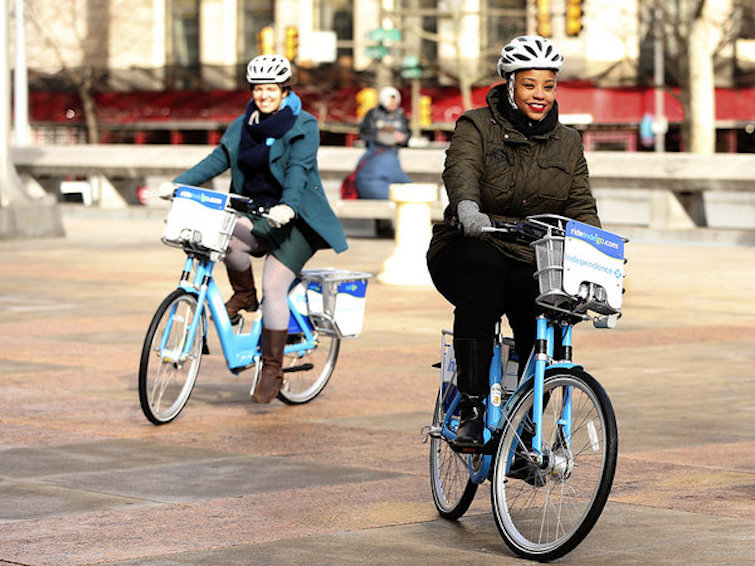Indego hits 100,000 ride mark faster than peer cities, will expand next spring

Like your cousin’s baby that’s already talking at 9 months, Philadelphia’s bike share system is advanced for its age, having hit the 100,000-ride mark just two months after its debut.
Indego has around 600 bikes in its system of about 60 stations and only had around 500 during its first month, making the six-figure milestone more impressive.
While a few more stations and bikes will be added in the coming months, the next big expansion of the system is planned for next spring, says Brodie Hylton, marketing manager for Bicycle Transit Systems, the contractor charged with implementing the system in coordination with the Mayor’s Office of Transportation and Utilities.
Indego is expected to ultimately expand to 180 stations and 1,800 bikes, although exactly how big a growth spurt we will see next year has yet to be determined. That said, planning for that expansion has already begun, now that more reliable ridership data is being collected. Early ridership data is misleading due to curious riders trying out the system. The strong ridership numbers translates into reliable information for planners plotting where new docking stations will go.
Indego’s reached the 100K ride club notably faster than similarly-sized ride share programs in other cities, auguring well for the program’s continued popularity.
In Boston, the Hubway’s six hundred bikes had only been ridden around 75,000 times at the two-month mark. In Washington D.C., Capital Bikeshare only hit 80,000 by this time, despite starting off with 800 bikes. And Denver’s program only reached 100,000 after seven months.
And while bragging rights over Boston, DC and Denver are always welcome, the big numbers matter for more important reasons, says Hylton. Indego is performing well on two key metrics: rides per bike per day (about three) and members per bike (around ten). Both numbers suggest a strong demand for the bikes.
Indego now has just over 4,500 active 30-day members, where riders pay $15 per month for unlimited free trips of up to one hour, and another 1,800 flex members, who pay $10 a year plus $4 per trip for up to an hour. Non-members can also walk up to a kiosk and pay $4 per half hour.
Hylton credits Indego’s relatively unique membership system for much of its early success. Other cities use annual memberships and more complicated pricing systems where costs grow exponentially the longer you ride – fine for math-literate foreign tourists, but baffling to many Americans. Straightforward pricing and shorter memberships make it easier to try Indego, and then get hooked.
“The barrier to entry is much lower here,” says Hylton. “I think that helped us get our membership numbers up quicker [sic].”
In the other cities defense, Philly had a couple of things going for it. First, bike share wasn’t exactly a new concept when it arrived in April. Denver’s system started in 2010, as did Washington D.C.’s – and DC’s was a reboot of an earlier, failed attempt in 2008. Boston launched in 2011, and New York’s Citibike launched in 2013. Whereas other cities approached bike share with cautious curiosity, there was a fairly large contingency of Philadelphians clamoring for Indego.
WHYY is your source for fact-based, in-depth journalism and information. As a nonprofit organization, we rely on financial support from readers like you. Please give today.



